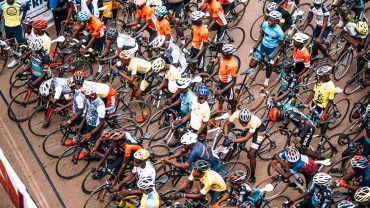Keen to see as much of Sierra Leone during my short time here, I hurriedly accepted an invitation to walk up Picket Hill on Sunday 23rd September. Always one for thorough due diligence, a few search results later I quickly realised that this was far from the casual Sunday stroll I had imagined.
At 09:20 we gathered at the base of the trail in the village of Koba Wata where our guide for the day, Alouhai, gave us our safety briefing, time objectives and the lowdown on the 4 hour course record set by a pair of Swiss pensioners.
Beginning the walk, you’re immediately met by an information placard highlighting the resting place of the influential political leader, Solomon Anthony James (SAJ) Musa from the civil war. Further points of interest along the route would show and tell us about the former villages of Yankeh Soko, Magbatha and Masophe. You also pass a resting house used by Portuguese slave traders who walked this very same route over 200 years ago. These placards acted as welcome resting points for the group to catch our breath, but also an opportunity to appreciate the breadth of Sierra Leone’s pre and post-colonial history.
About 20 minutes into the walk, the route becomes steeper and the path begins to narrow into a corridor of extended branches, fallen trees and vines. Enter Mohammed, our machete wielding local guide for the day who effectively clears any obstacles, but also tactfully marks various trunks to ensure that we never get lost on the way back down. Over the course of the 7 hours 22yr old Mohammed does not sweat, drink or ever seem out of breath. I am convinced he’s not human.
If you’re lucky and sharp eyed, you’ll see some wildlife in the forest as you might expect. We heard and saw the backs of some white-tailed monkeys. We also saw some colourful caterpillars, butterflies and the corpse of a chameleon. Along the route we also met some local farmers producing some of my favorite high-altitude crops, with plots scattered all over the hillside. This, however, did serve as a reminder of the unregulated land clearance that occurs within this unprotected area of the National Park, posing a constant threat to the local climate, wildlife and serenity of the area.
3 hours later the forestry begins to give way to open rock. Navigating cautiously on top of the slippery surface, followed by a few steep climbs, we finally reached the top at 12:22! The view at the peak is incredible, allowing you to see across the peninsula for miles onto the coasts of the Southern province. The flat surface as a perfect resting point to take in the view, relax, have lunch and even top up your tan if you’re that way inclined. I would have happily stayed for hours, but Alusine, our militant timekeeper, only gave us one. In hindsight, I now appreciate his strenuous timekeeping as attempting the descent in anything other than daylight would’ve been challenging.
In my opinion, going down was a lot more difficult than going up, mainly due to my inappropriate footwear. As a healthy twenty-something year old, I was stubbornly against the idea of a walking stick. However, after slipping off my 9th boulder, Mohammed quickly made me one, which made the remainder of the day significantly easier.
We did experience a little rain, but you’re afforded a good amount of cover from the overgrowth and the rain drops actually add to the ambience and acts as a refreshing break from the 30+ degree heat. 15 minutes from the end, Big Wata finally lives up to it’s name as you approach a 10m wide waist deep river. Mohammed carried 4/6 of us on his shoulders. I wasn’t one of the lucky ones so had to wade across with my valuables and my shoes on my head (bag recommended). Soon after crossing we came across other human beings for the first time in 7 hours. Telltale signs we’d arrived at the village and had completed the trek!
For those who want more than a Sunday stroll down Lumley beach, but aren’t quite ready to commit to the 3 day climb of Mount Bintumani, Picket Hill serves as the perfect compromise. Uninterrupted panoramic views of the green white and blue, an abundance of wildlife, informative historic points of interest and 2317 calories burned, the trek is a rewarding day trip that show’s off the mountainous forestry of Sierra Leone, but only 10 minutes outside of the capital.
Essential:
• High energy snacks – Fruit, biscuits, peanut butter
• At least 3 litres of water per person
• A camera
• A rucksack
Recommended:
• Walking boots
• Long trousers
Stats
• 6 hours 59 minutes
• 8 miles (12.9 km) across
• 888m (2913ft) high
• 23178 steps
• 2116 calories burnt




Comment (0)